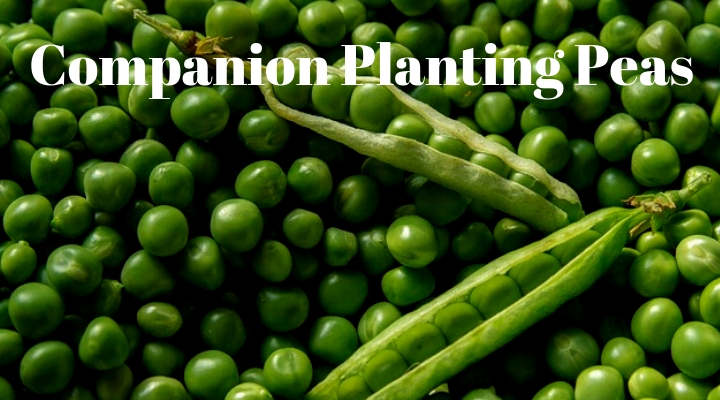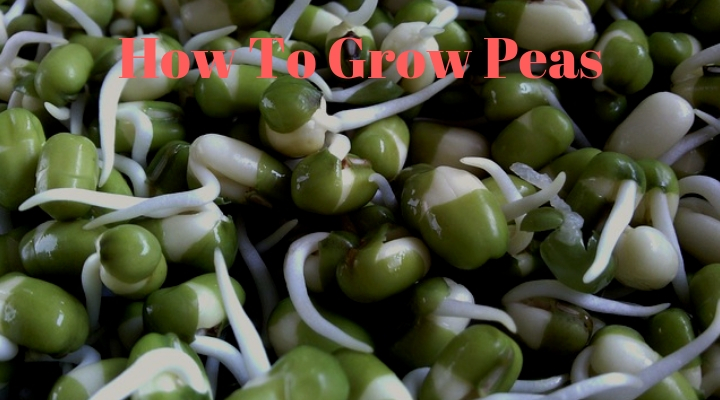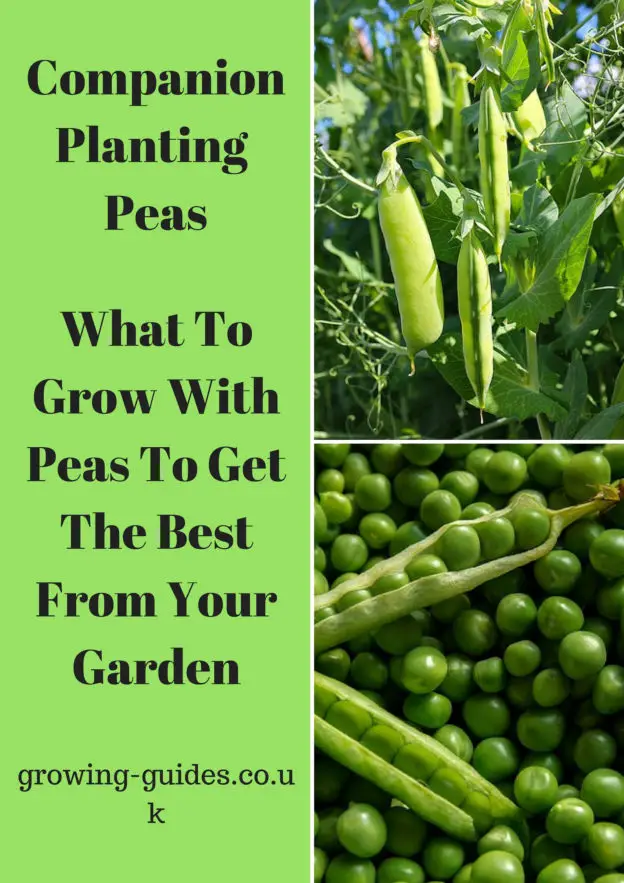All peas including snow peas are members of the Legume family, they all fix nitrogen from the air. This gives us gardeners two main advantages, firstly at the end of their growing season they add nitrogen to the soil (making it available for the following crop). Secondly when companion planting peas with other plants there is no competing for nitrogen.
Companion Planting Peas

The best plants to grow with peas are plants that thrive in the same environment with peas and have the same watering and nutritional needs. These include:-
- Carrots
- Sweet Corn
- Radishes
- Beans
- Celery
- Tomatoes
- Peppers
- Aubergines
- Parsley
- Strawberries
All of these plants will benefit from not having to compete with peas for nitrogen, as peas and beans(legumes) fix nitrogen from the air and don’t deplete nitrogen from the soil.
An interesting way to protect your peas from bird damage if you do not have a net is to grow clover amongst your brassica(cabbage) crops. This will keep the birds from your pea plants and as they don’t tend to eat brassicas, it’s not going to be detrimental to your brassicas.
Harvesting Times
The fact that many of the above list will need different lengths of time to grow doesn’t matter, just harvest as and when. By growing your crops together in this way you will not only save space and enhance the health of your crops, but you will also keep weeds suppressed, and save water.
You will notice that some of the above list are root crops, some are bush type plants and some including peas are climbing plants. Using creative planting, just imagine how much space you can save in your veg patch. Try growing beans and peas using the sweet corn plants as supports, with tomatoes and peppers or aubergines in front. Sowing carrots and radishes underneath.
Plants Not To Grow With Peas
Peas will grow well with lots of plants but just like us they don’t get on with everything. Peas don’t grow well when planted anywhere near any member of the allium family, these include:-
- Onions
- Leeks
- Garlic
- Shallots
All of the above will stunt the growth of pea plants and in some cases stop the pea plants from developing at all.
How To Grow Peas

I always start my peas off by placing them on some pre-soaked kitchen towel in a warm place until they shoot. I then carefully plant then in recyclable paper or cardboard pots until the time of the last expected frost for my area. They are then planted out in their final growing space left in the pot which will rot down as the plant grows.
What Soil To Grow Peas In
Peas are not too fussy about soil types, but they prefer a free draining, well fertile soil, and will not grow too well if at all in a heavy, clay soil.
How To Care For Peas
Peas are a very easy crop to grow, they usually don’t need feeding, and a good heavy watering once a week is usually enough to keep them healthy. If you experience a particularly dry spell they might need extra watering. One more thing… Where I am I have to cover my peas with a light netting to prevent them being eaten by birds.
Pigeons will decimate the whole plant if given the opportunity not just the pea pods, but the leaves and stalks as well! So if you have pigeons in your area it’s worth protecting your peas with some netting.
When is the right time To Harvest Peas?
The best answer to this question is as soon as possible, because the more you pick, the more they will produce. Peas are ready to be picked when the pod is full but there is still a little space between the peas in the pod. You can usually see this or if not just run your fingers along the pod and you’ll feel the peas through the pod.
When Is The Right Time To Sow Peas?
As with most crops, there are many different varieties of peas, giving you a long growing period. Check the seed catalogues and packets for the most favourable types for your area, but it is possible to be eating fresh garden peas from May right up until October.
Peas are like potatoes in this respect, they have earlies, second earlies, and main crop. Also there is a huge variety in the size of pea plants, ranging height from 12 inches(30 centimetres) up to 5 foot(150 centimetres).
One other point on growing peas is that early and late peas don’t tend to attract the unwanted attention of the pea moth. Which means they are much less likely to contain maggots in the pods.
Do I have Enough Room To Grow Peas
The short answer is YES, as I said above they come in many sizes and the smaller varieties do well in containers and pots as long as you remember to water regularly, and also to support the plant as it grows so that the stalk doesn’t bend and snap under the weight of it’s crop.
When growing outdoors in rows staking is not such an issue, I use cuttings from my pear and apple trees as pea sticks just so the tendrils can grab hold and support themselves.
Will Peas Grow In Hot Weather?
Peas are a cool weather crop and although they will continue to live in hot conditions(as long as they are watered regularly) they will stop producing peas until the weather cools down.
What To Do With Pea Plants Once They Have Finished Producing
Once you have enough peas and your freezer is full of peas(to see how to freeze peas click here), cut the plants at soil level and add the plants to your compost. Leave the roots in the soil as this is when they add nitrogen to the soil.
Are Peas Good For You?
Yes peas have many important minerals and vitamins, including:-
- Protein
- Vitamin A
- Vitamin B6
- Vitamin B12
- Vitamin C
- Vitamin K
- Calcium
- Iron
- Magnesium
- Phosphorus
- Potassium
- Zinc
- Copper
- Manganese
Plus many more! Including fibre, and omega 3 and omega 6.
So not only are peas a pleasure to grow, but they are also a good source of essential vitamins and minerals. Every gardener should find some space to grow some peas.

